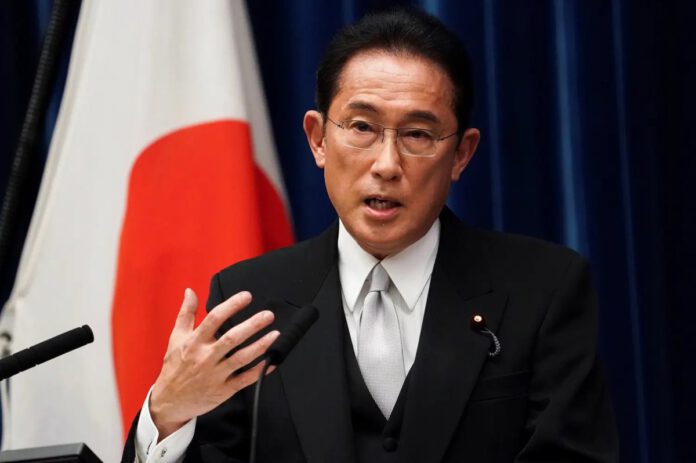
On August 14, several Japanese media outlets, including Japan Broadcasting Corporation (NHK) and Japan Economic News, reported that Prime Minister Fumio Kishida held a press conference that morning, announcing he would not participate in the Liberal Democratic Party (LDP) presidential election next month. This decision signals that the Kishida Cabinet, which began in October 2021, will step down this fall. After the LDP elects a new president, Kishida will no longer serve as Prime Minister of Japan.
Japanese media suggest that Kishida’s withdrawal from the election stemmed from his assessment that he could not overcome the public distrust arising from issues such as party faction political funding. Consequently, securing re-election would be difficult. Reuters notes that the LDP’s newly elected leader, Kishida’s successor, will face the challenge of uniting a difficult-to-manage ruling bloc while addressing domestic issues such as rising living costs, escalating geopolitical tensions with China, and the potential return of Trump to the White House next year.
Experts and scholars suggest that, unlike previous elections, this upcoming Liberal Democratic Party (LDP) presidential race is particularly difficult to predict due to the absence of clear factional support. Traditionally, the backing of LDP factions has provided a reliable indicator of election outcomes. However, this time, the lack of a dominant faction has introduced unprecedented uncertainty. The crucial question is whether Kishida’s successor will continue his policies, especially in the areas of post-war security and Japan’s diplomatic relations with China and the United States, or whether there will be a significant policy shift.
Kishida’s decision not to run was primarily driven by two factors. First, Kishida lacked broad support within the LDP, making it likely that he would lose the election. To avoid the political embarrassment of defeat, he chose to withdraw preemptively. Second, his cabinet’s approval rating has remained stagnant at dangerously low levels, consistently below 30%. Despite efforts to boost his popularity through various domestic and foreign policies, public support remained insufficient, further diminishing his rationale for seeking re-election.
The absence of factional backing makes this LDP presidential election unprecedented. Previously, factional endorsements provided a basis for forecasting election outcomes, but that is no longer the case.
Regarding the implications of Kishida’s departure for Japan’s foreign policy, Kishida’s three-year tenure marked a significant departure from Japan’s post-war security stance. His administration’s alignment with the U.S. and increasing tensions with China, particularly concerning Taiwan, have set a new tone for Japanese diplomacy. Whether the next LDP president and prime minister will continue Kishida’s approach or introduce new policies will be crucial for Japan’s future direction.
Currently, the Japanese political landscape is marked by a “three-headed” power dynamic involving Fumio Kishida, Taro Aso, and Toshimitsu Motegi. It was previously speculated that if Toshimitsu Motegi directly challenged Kishida’s position as LDP president, the stance of LDP Vice President Taro Aso would be crucial.
Reports suggest that Kishida’s decision to dissolve the LDP faction in January this year, along with his disregard for Aso’s views during revisions to the political funds control law, created tensions between the two. Recognizing the significance of Aso’s support, Kishida reportedly dined with him for two consecutive weeks in mid-June, aiming to mend their relationship and discuss the upcoming presidential election.
Additionally, former Prime Minister Junichiro Koizumi’s son, Shinjiro Koizumi, Shigeru Ishiba, and Taro Kono, are also considered strong contenders for leadership in Japan’s post-Kishida era. Taro Kono, the son of former Speaker of the House of Representatives Yohei Kono, has significant political credentials, having served as both Foreign Minister and Defense Minister. However, a TBS TV opinion poll placed Shigeru Ishiba and Shinjiro Koizumi as the top two candidates the public views as suitable for prime minister.
Beyond these leading candidates, Takashi Hayato and Noda Seiko have also announced their candidacies. Notably, Hayao Takashi was a close ally of the late former Prime Minister Shinzo Abe, who once envisioned her as Japan’s first female prime minister, though this was never realized.
A poll conducted by the Nikkei and TV Tokyo from July 26 to 28 found that Fumio Kishida’s cabinet approval rating in July stood at 28%, with a disapproval rate of 64%. The poll also revealed that Shigeru Ishiba led with 24% support among potential candidates, followed by Shinjiro Koizumi with 15%, and incumbent Economic Security Minister Takaichi Sanae with 8%.
Among LDP supporters, Ishiba holds a 20% approval rating, while Koizumi closely follows with 18%. Kishida’s approval stands at 12%. Among unaffiliated voters, Ishiba leads with 19% approval, compared to Koizumi’s 14%.
However, Ishiba faces challenges due to his weak party base and reputation as an “opposition figure within the party.” In previous LDP presidential elections in 2012, 2018, and 2020, Ishiba failed to secure sufficient support from Diet members, resulting in defeat.
Furthermore, in his newly published book on August 7, Ishiba articulated his views on constitutional amendments, advocating for the deletion of the second paragraph of Article 9 of Japan’s peace constitution. He argues that Japan’s Self-Defense Forces should “defend Japan independently.”
Source: The Arise News, Nikkei, NHK



